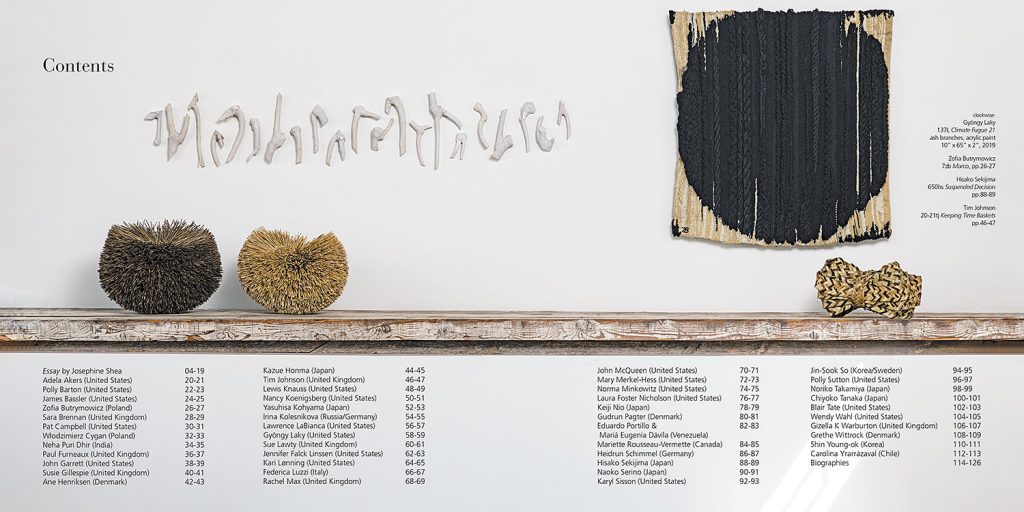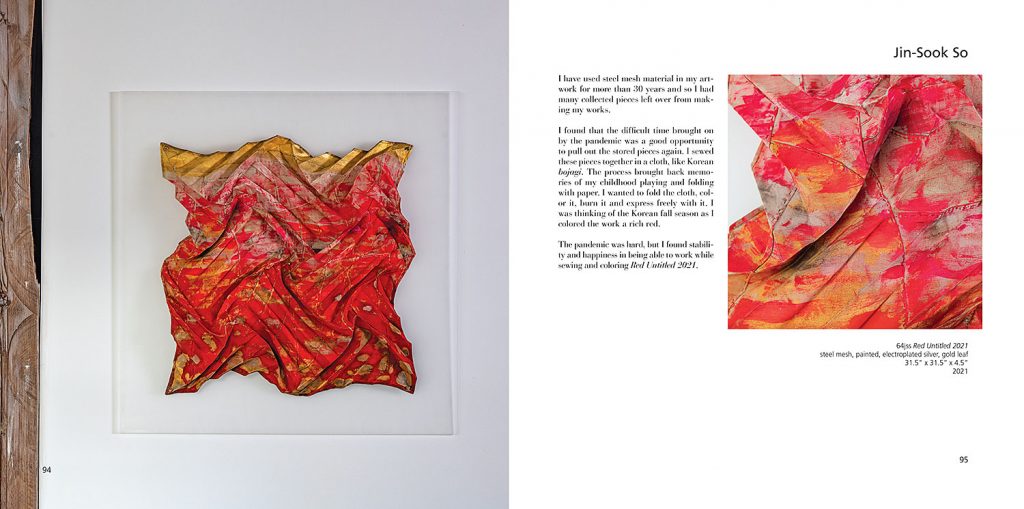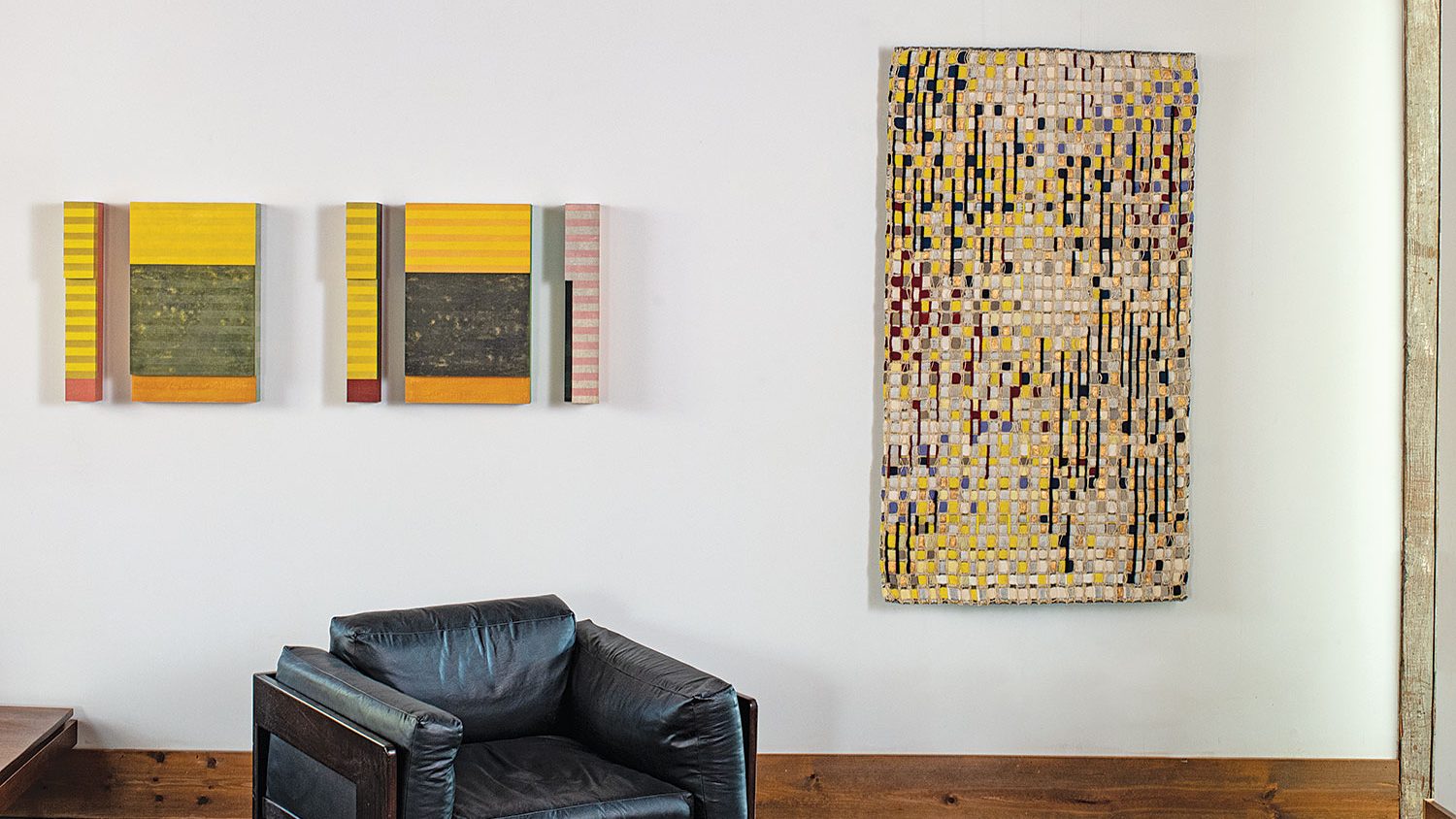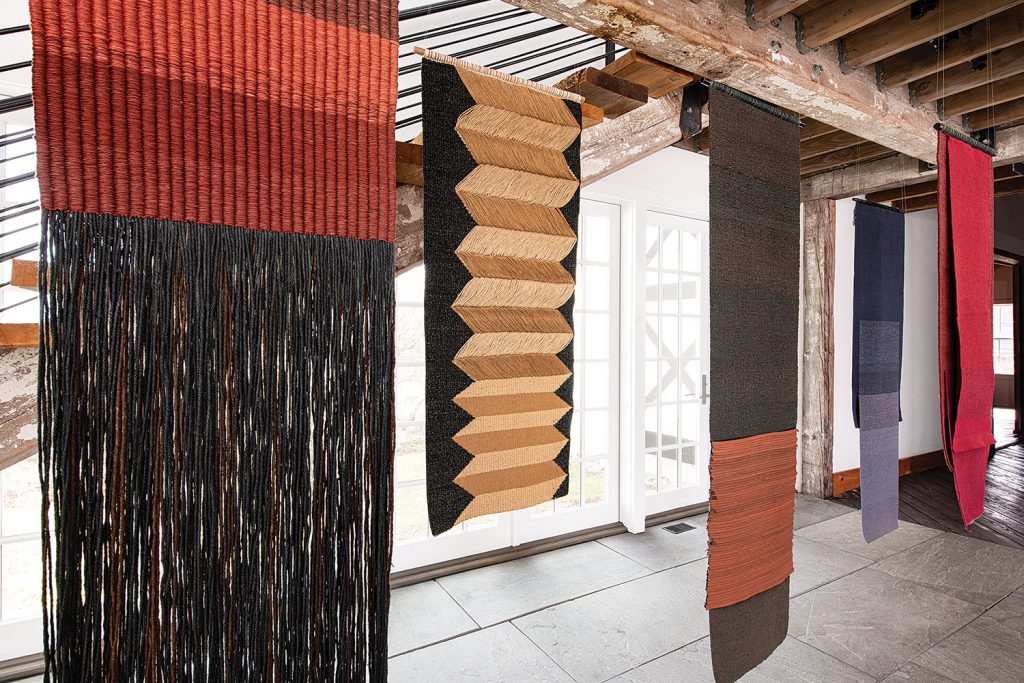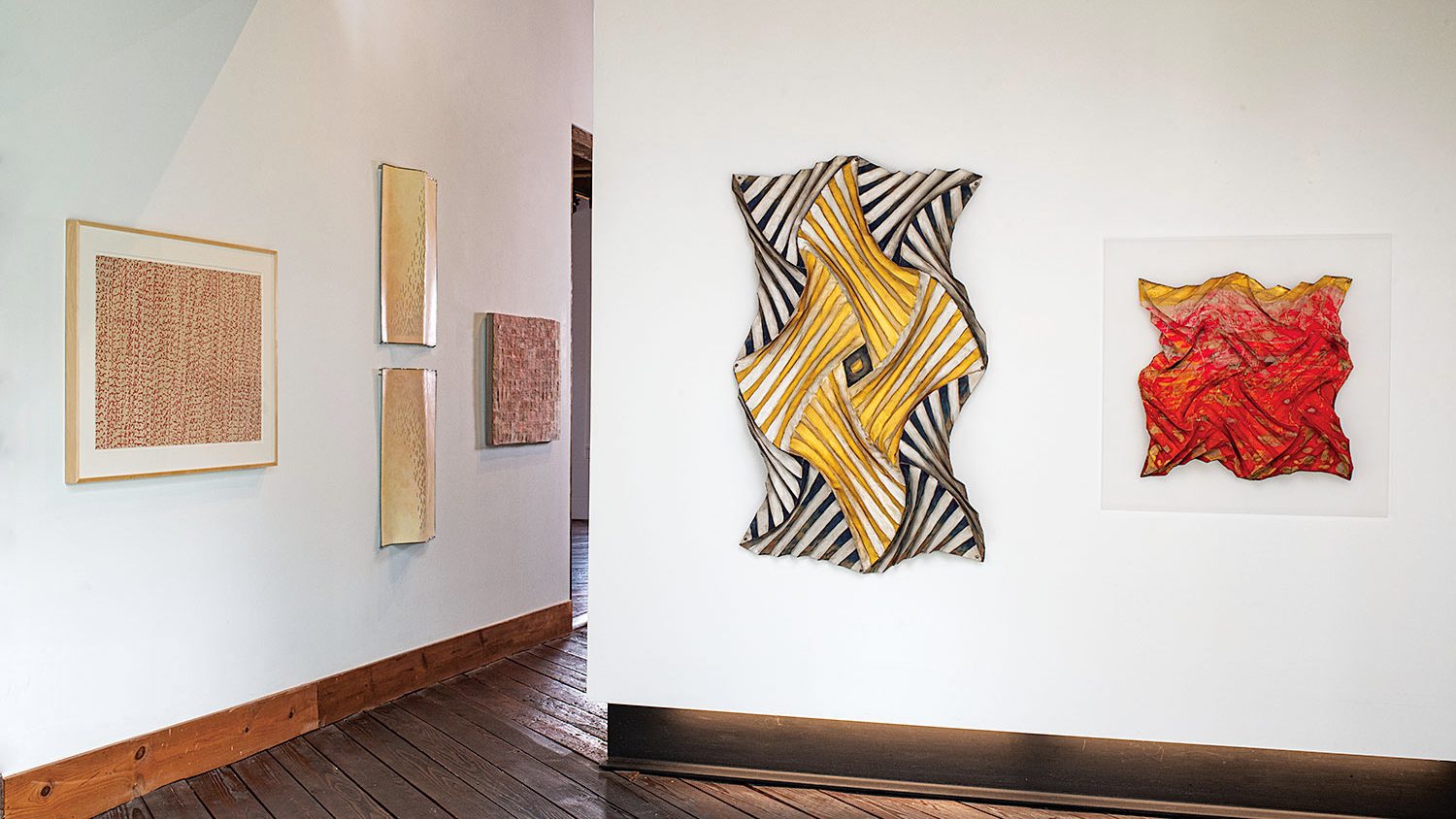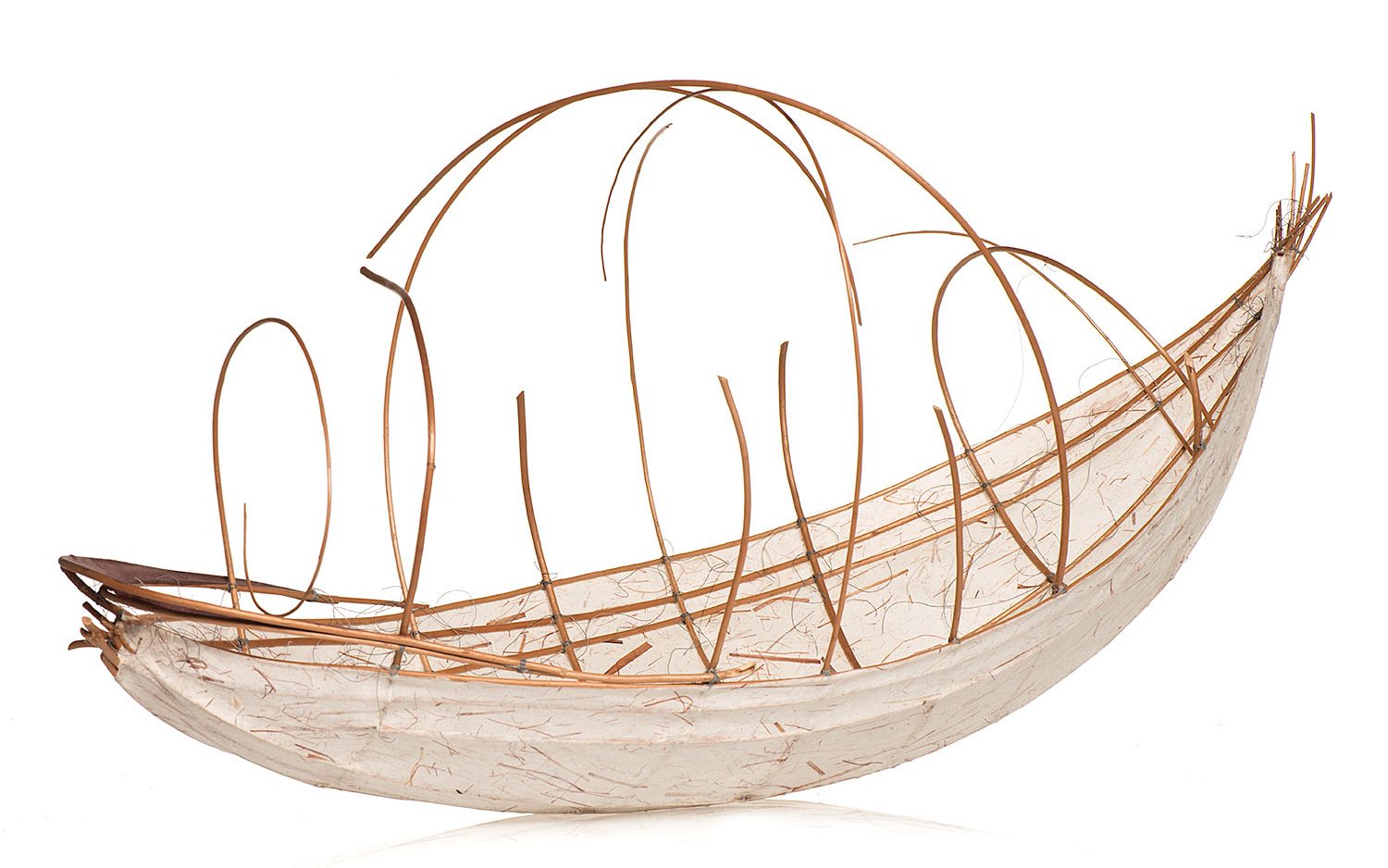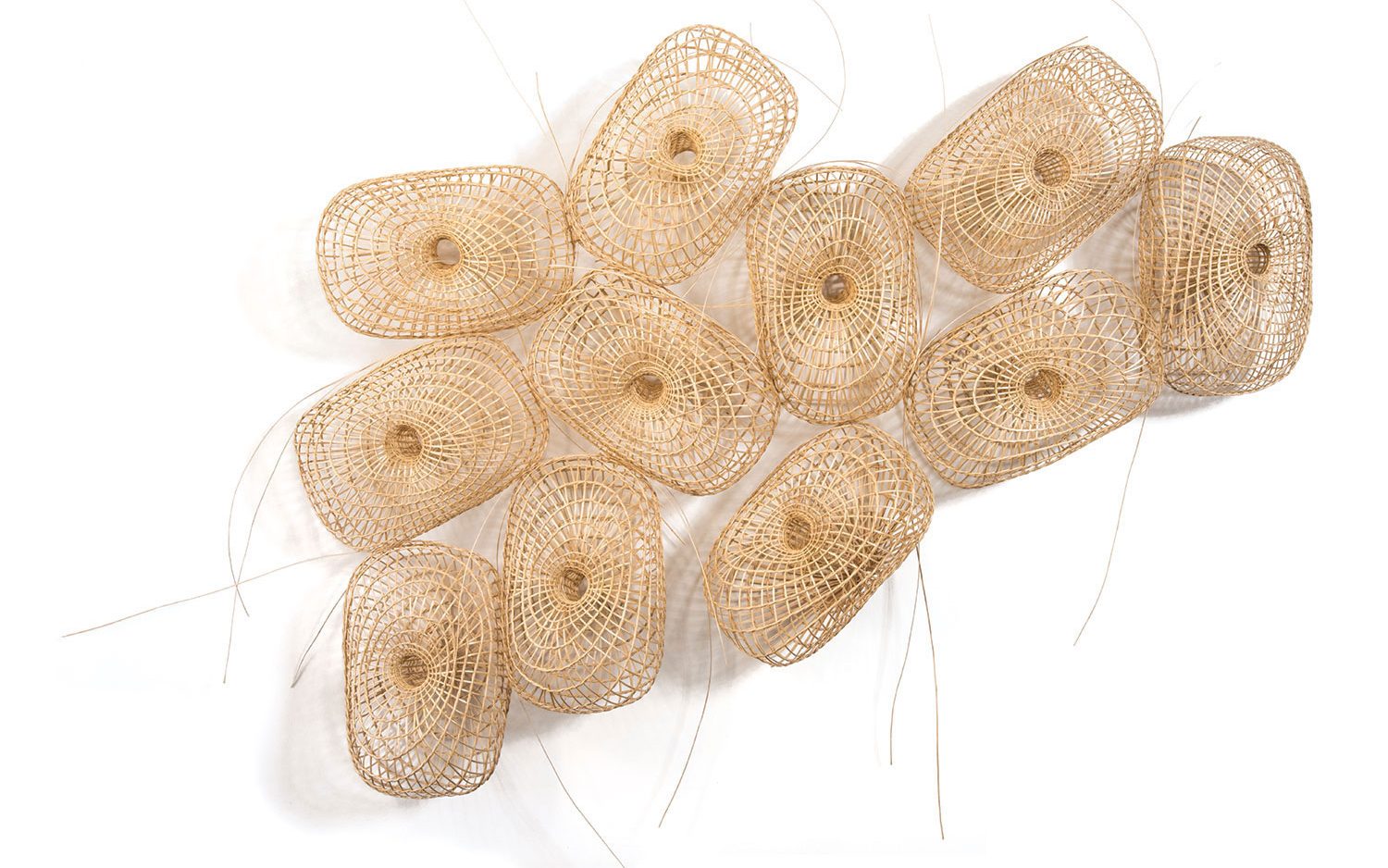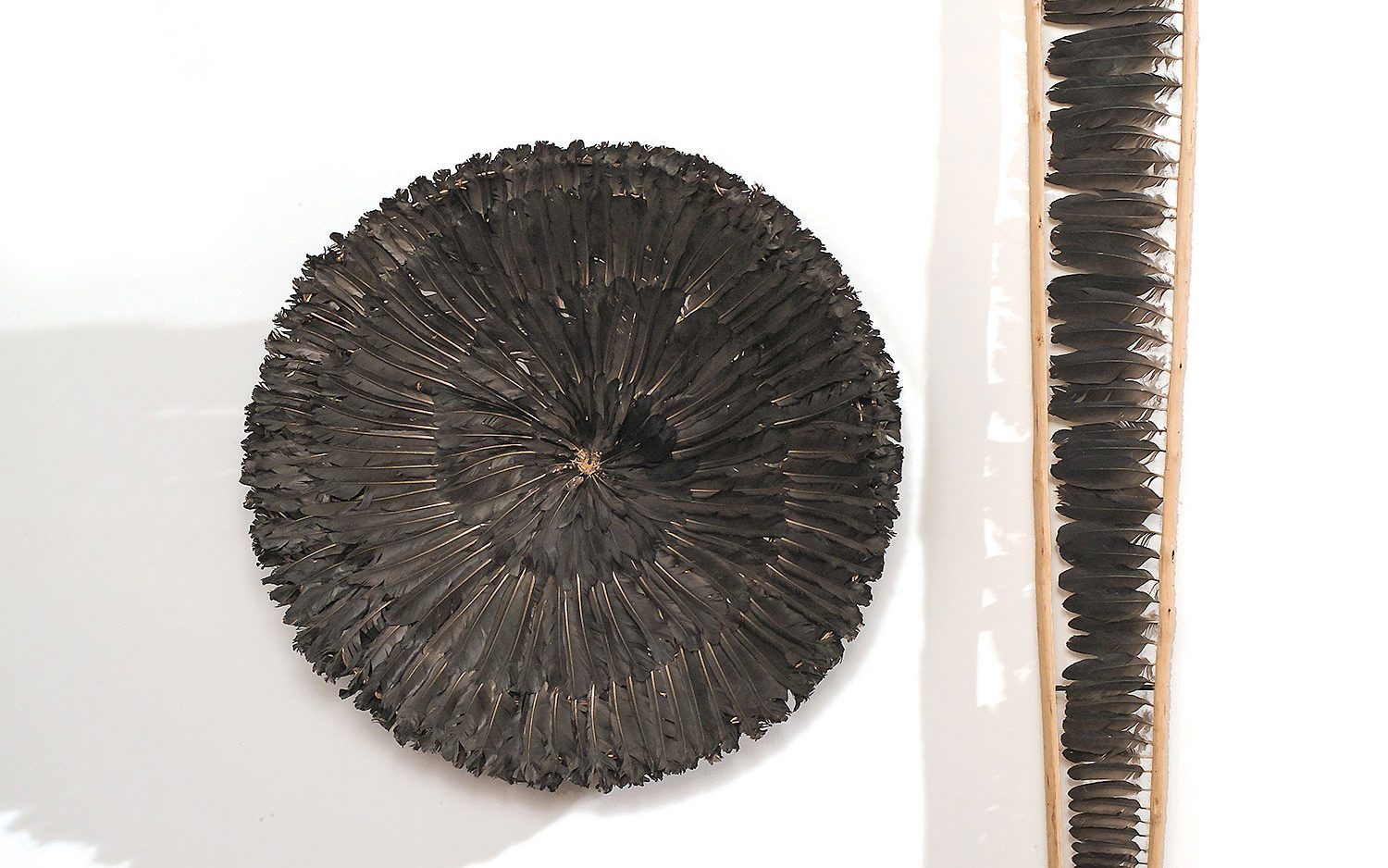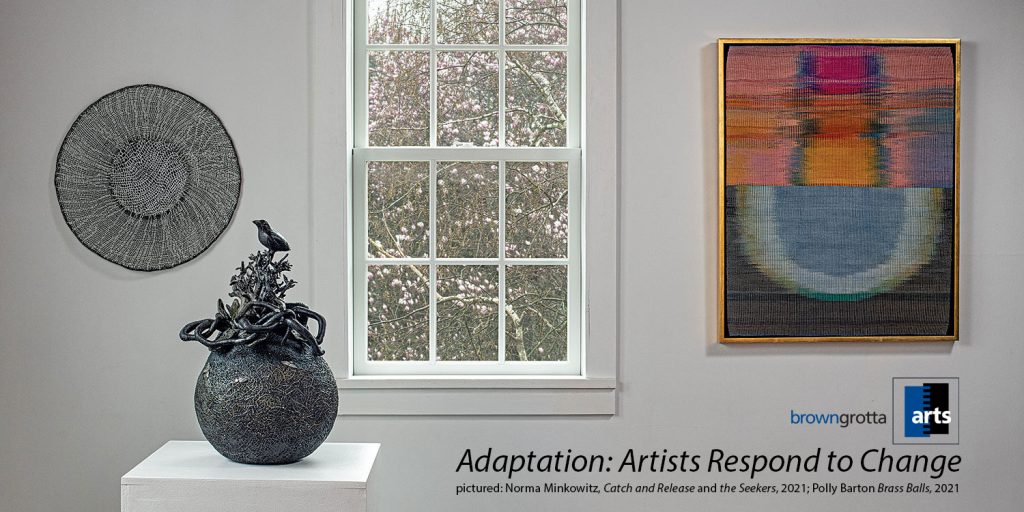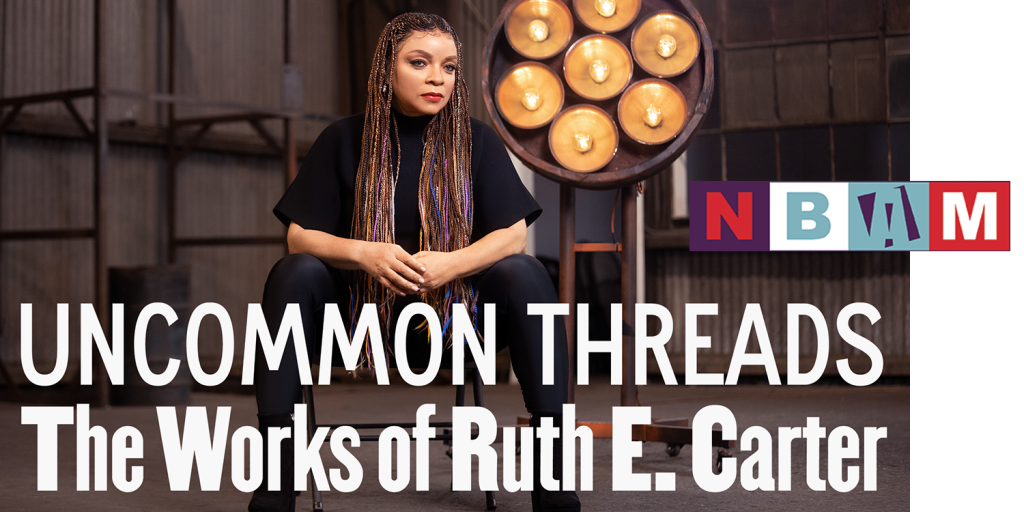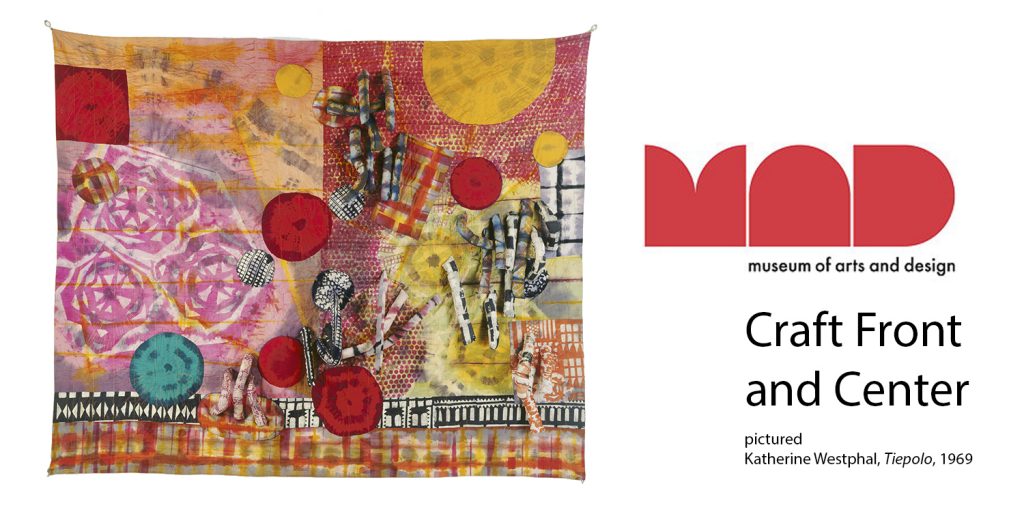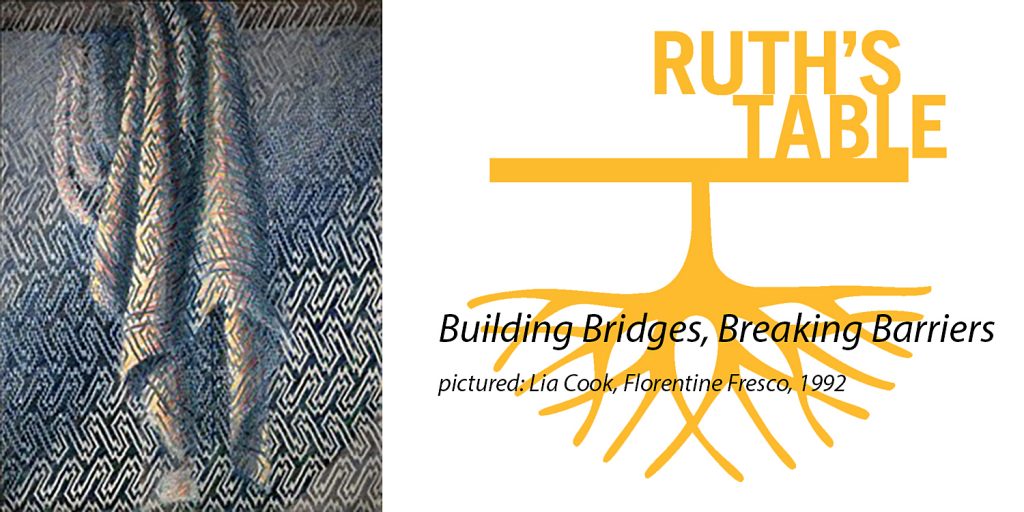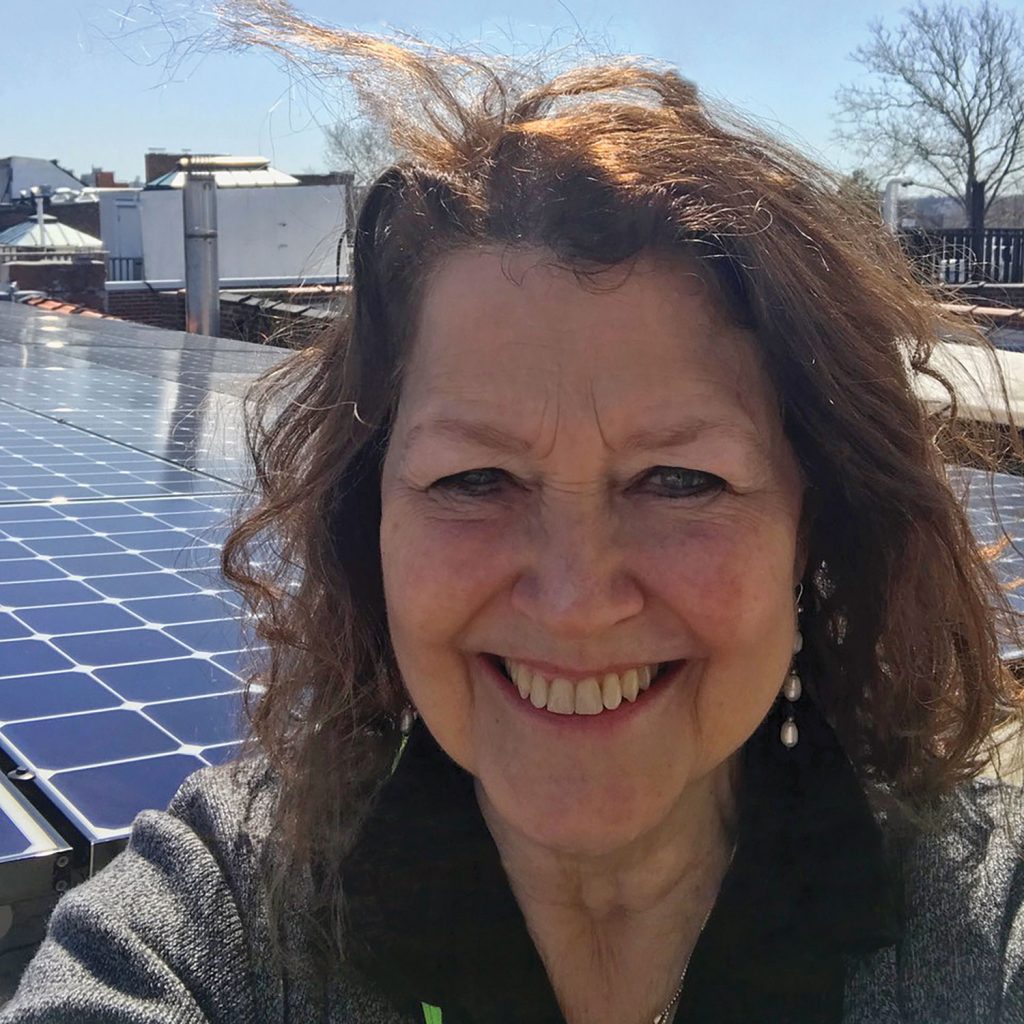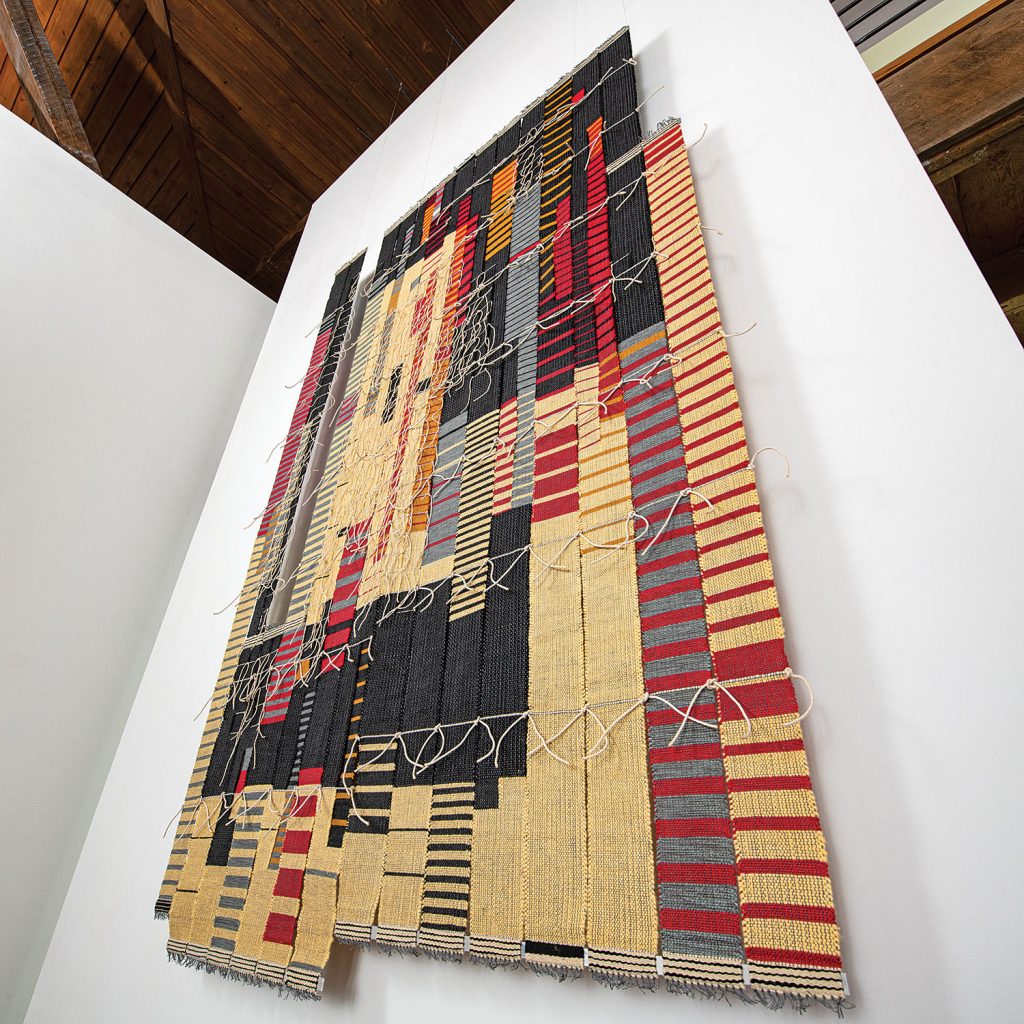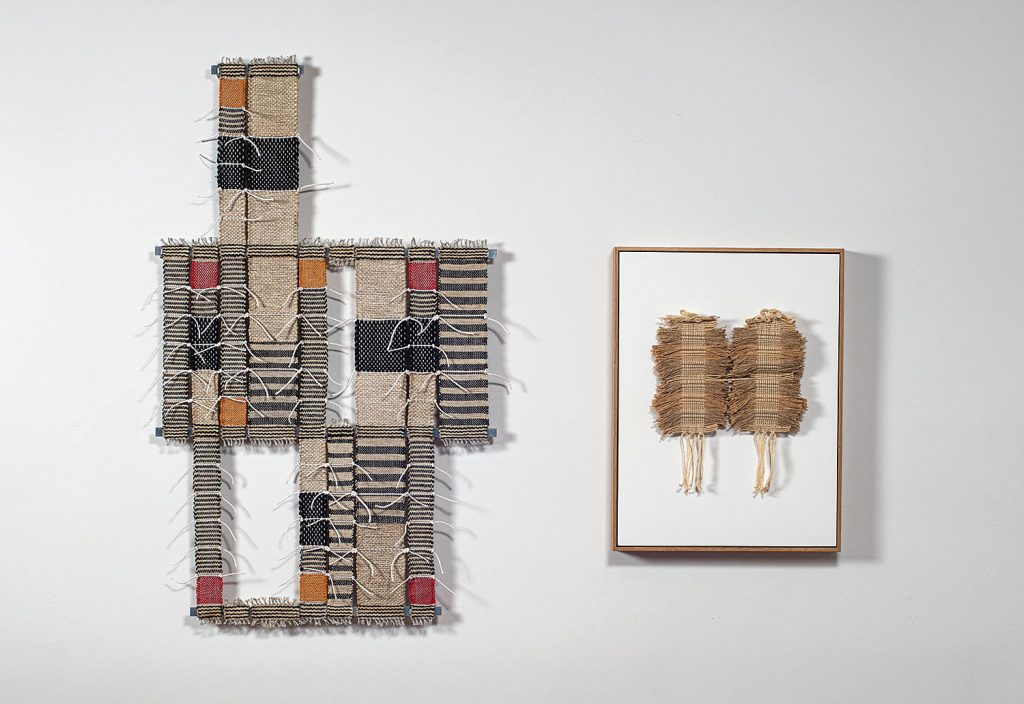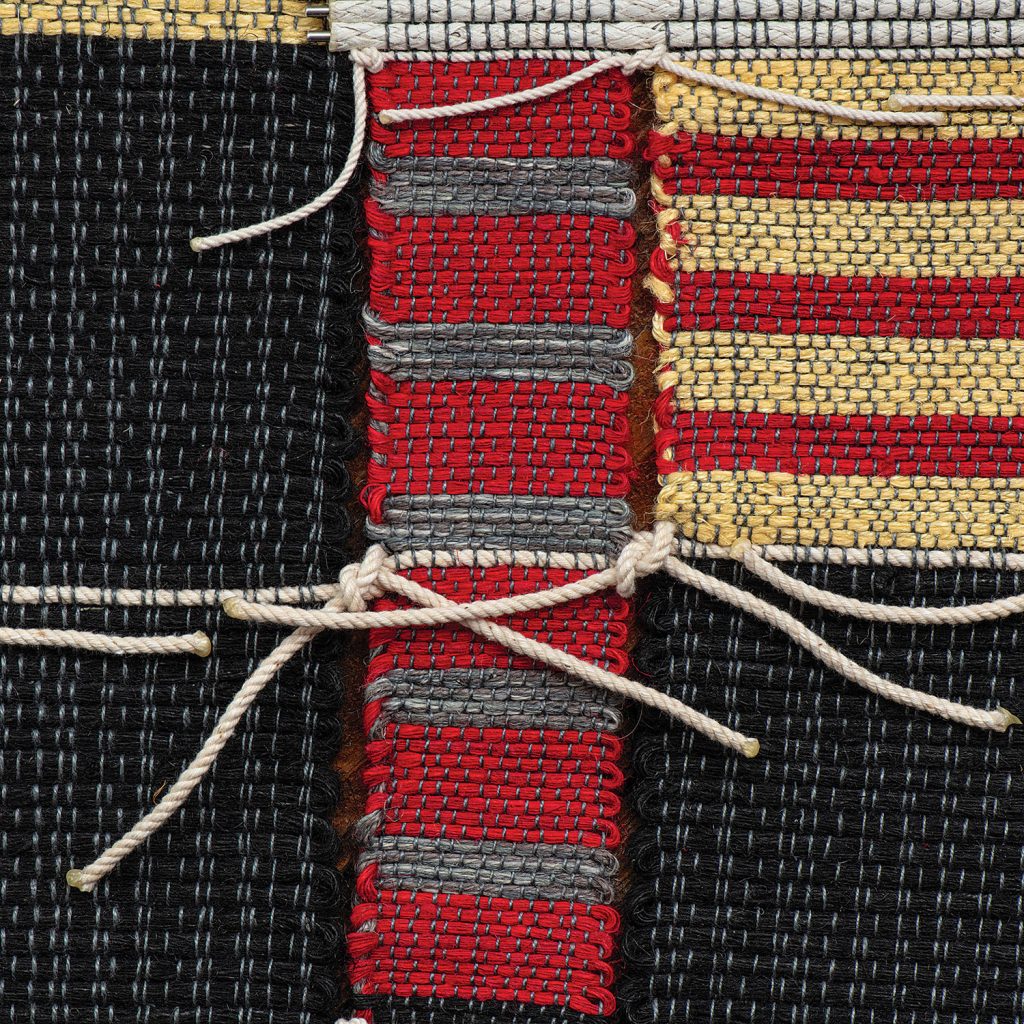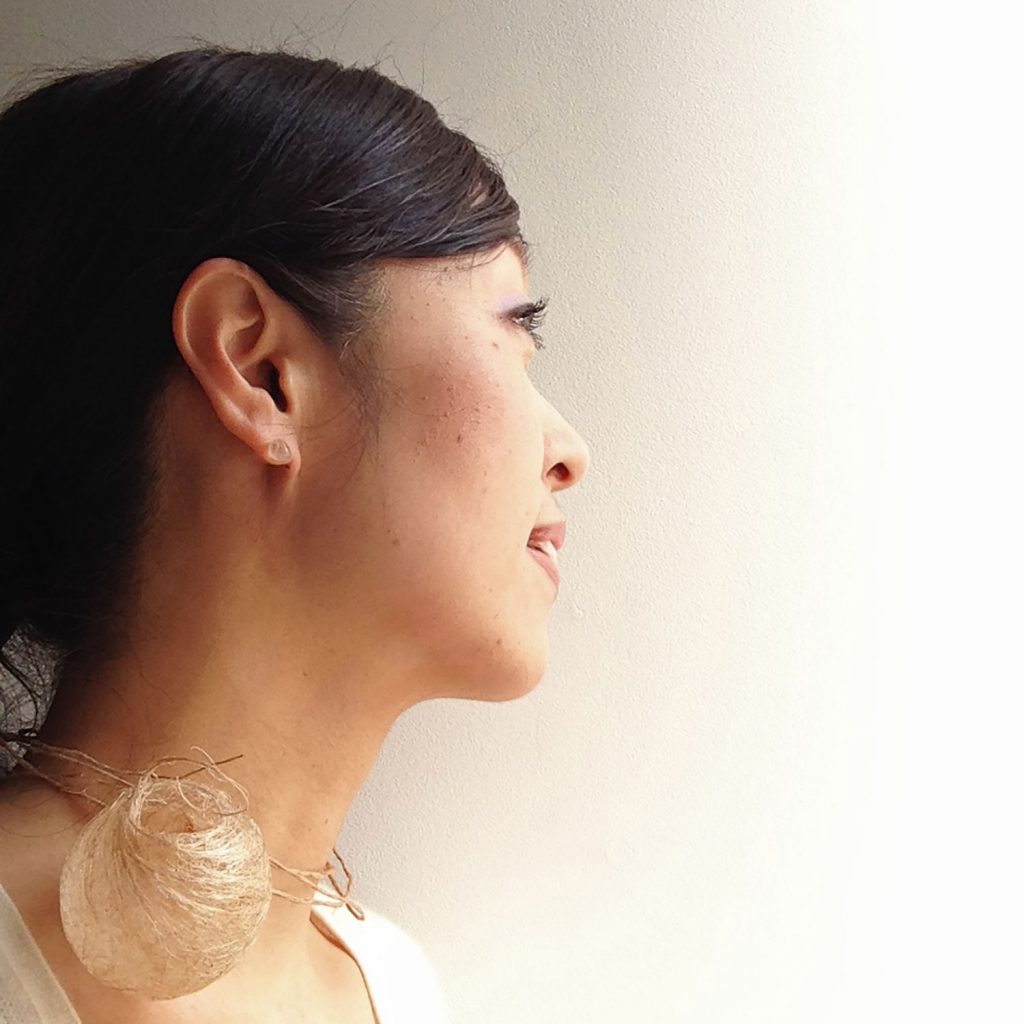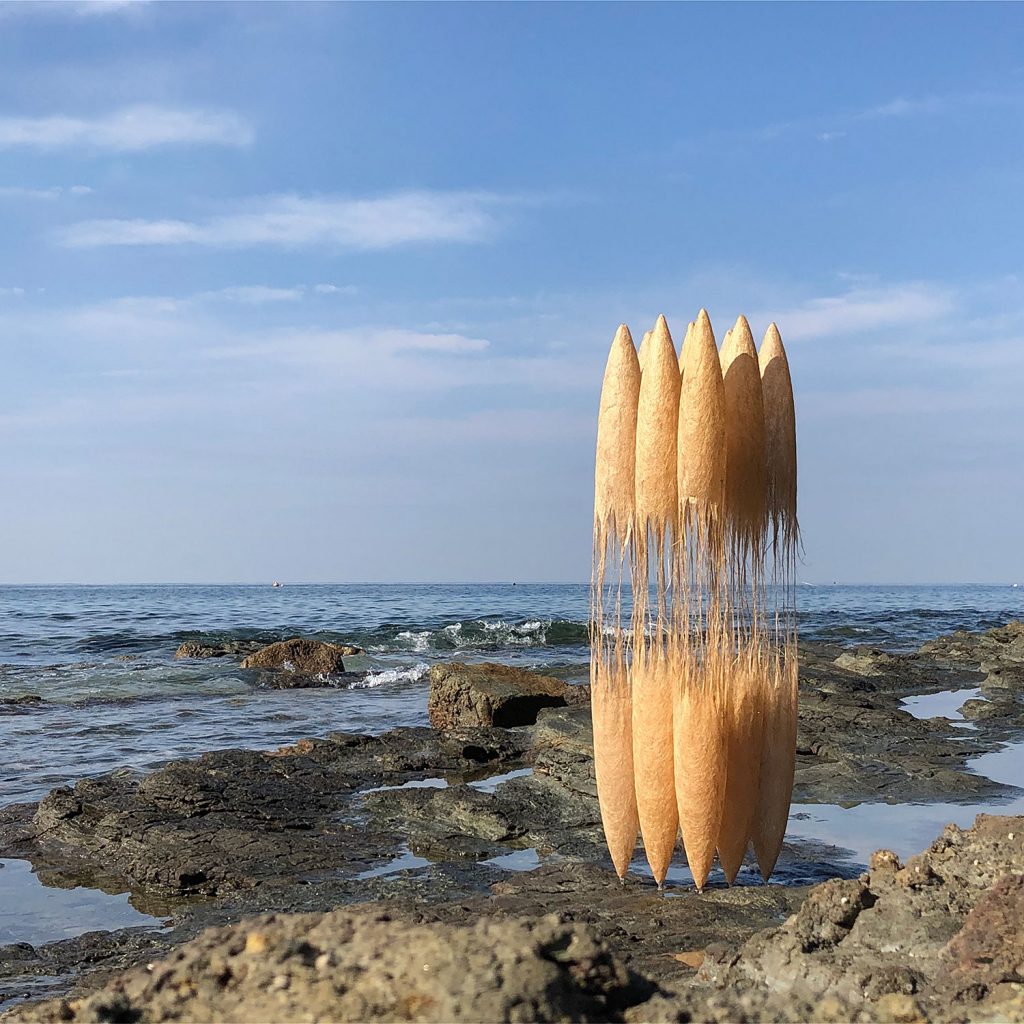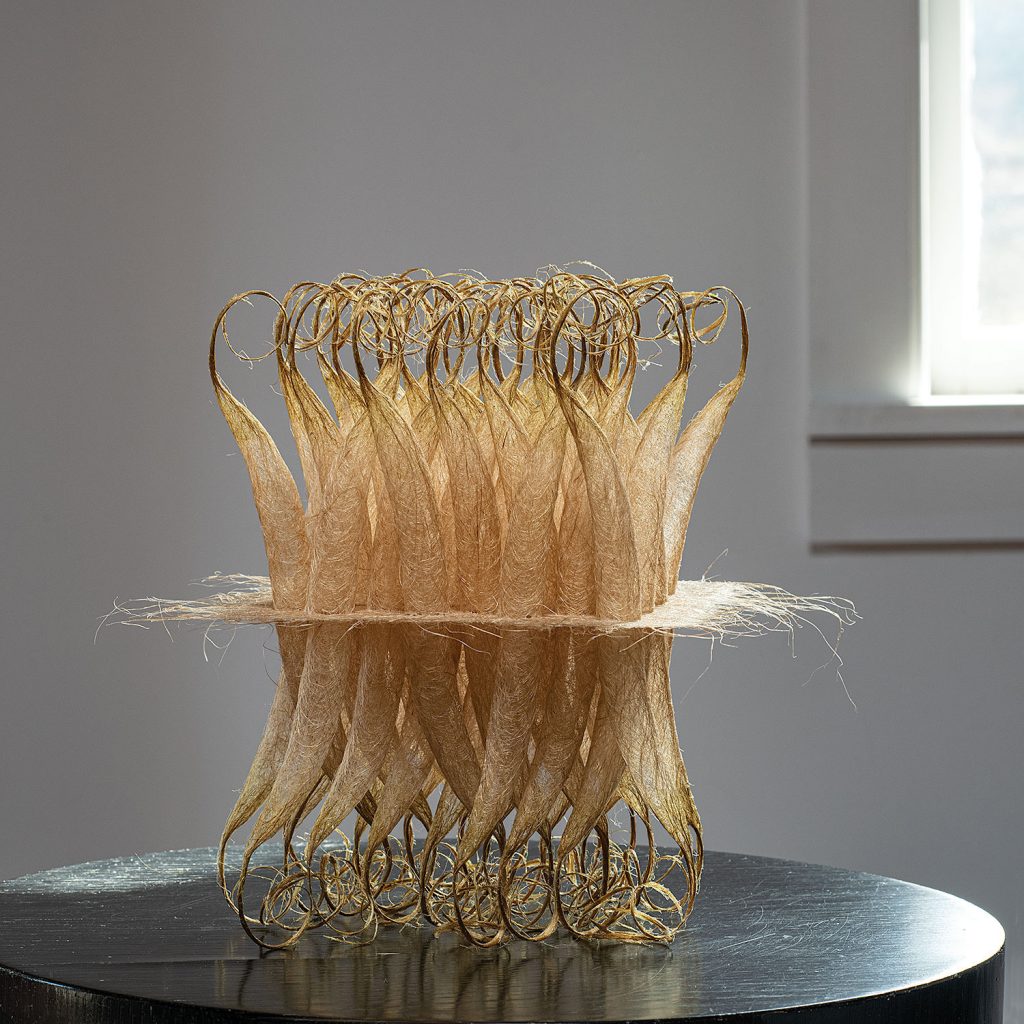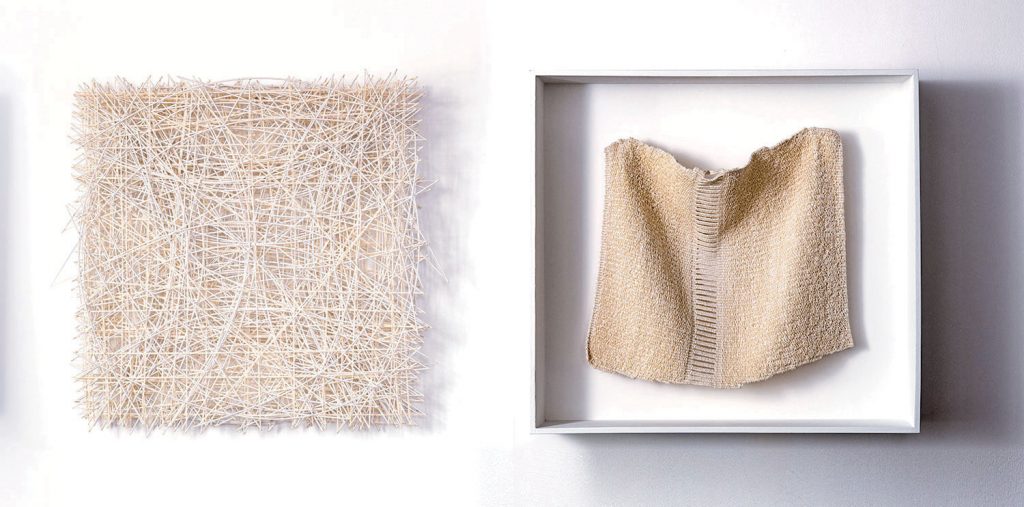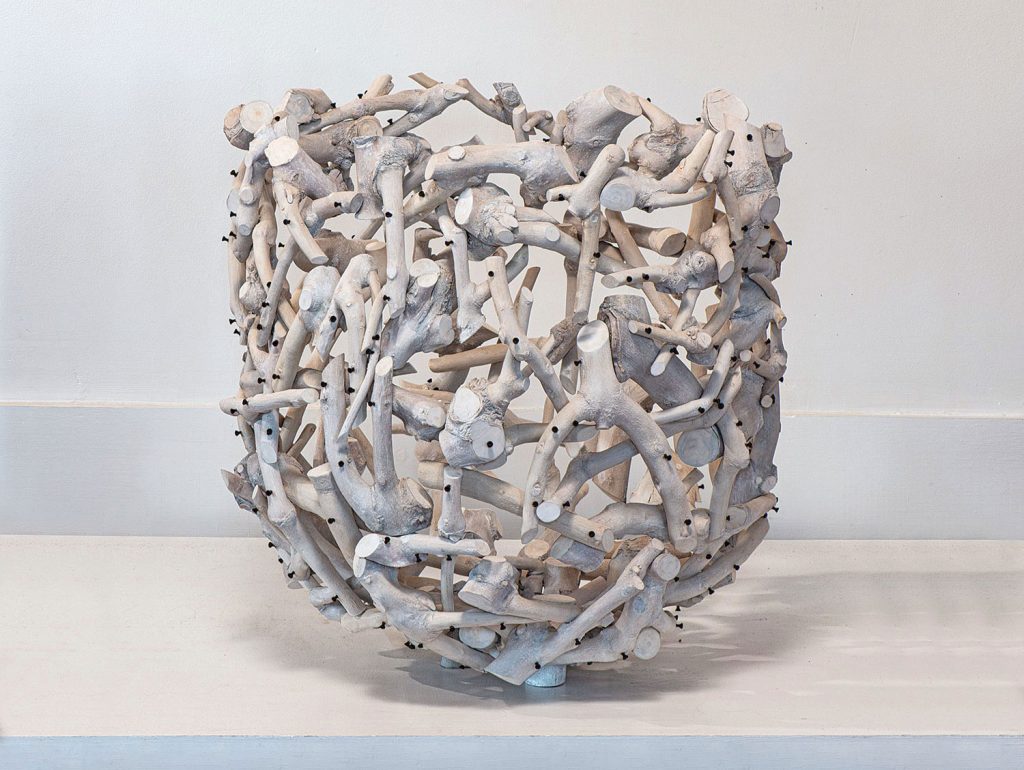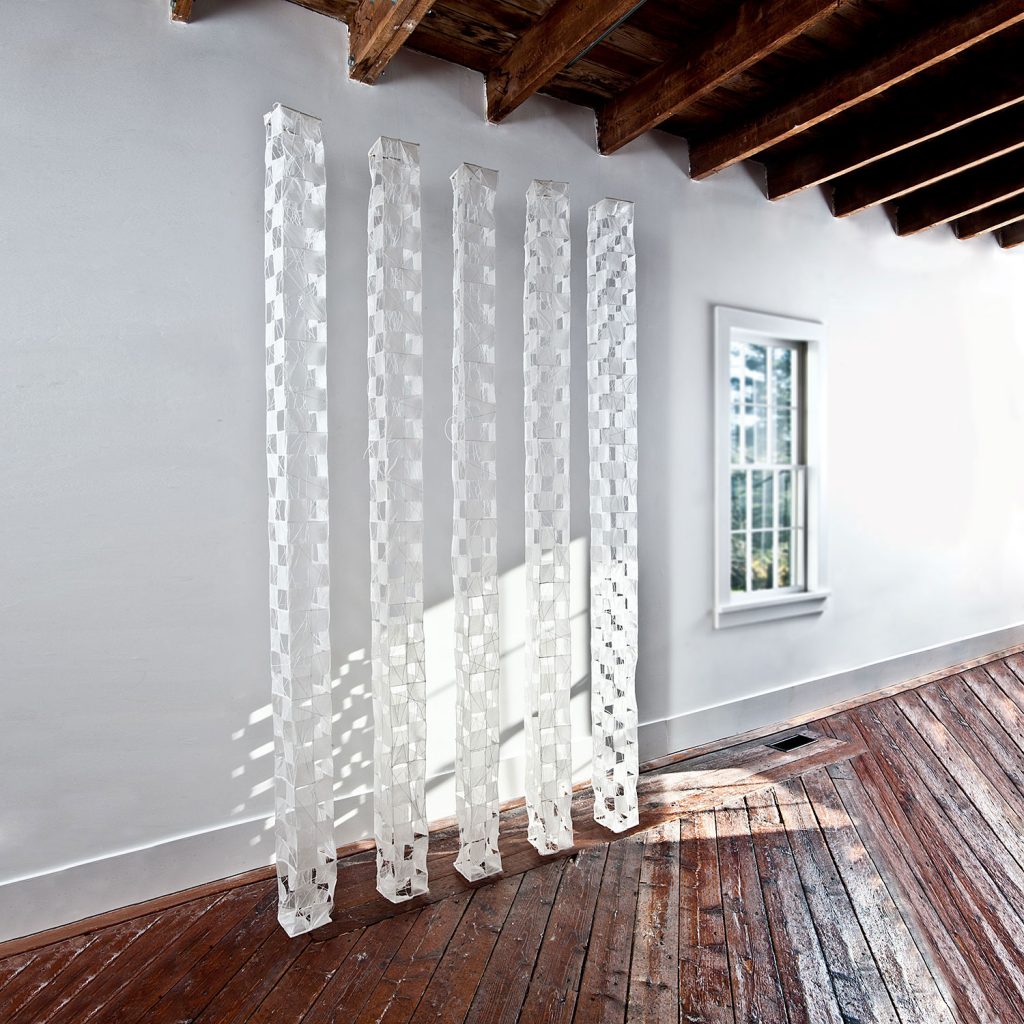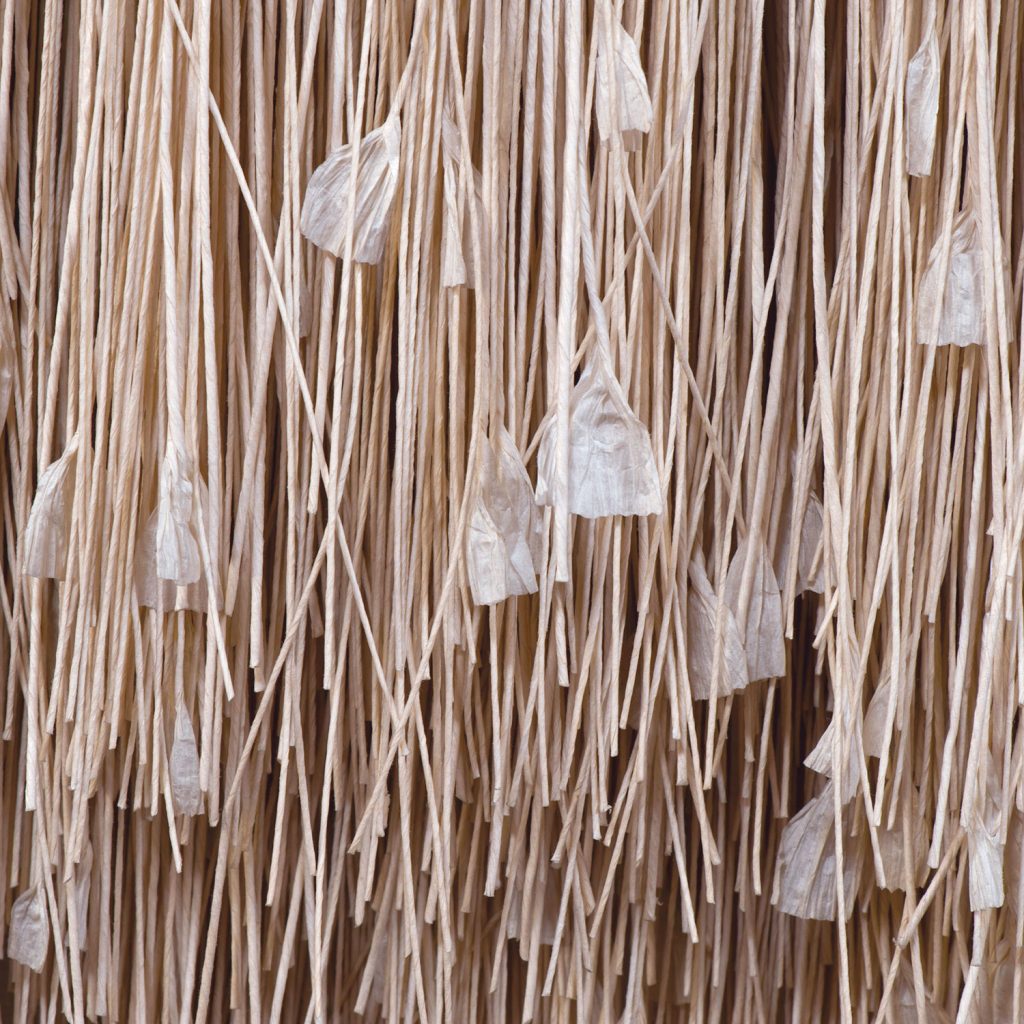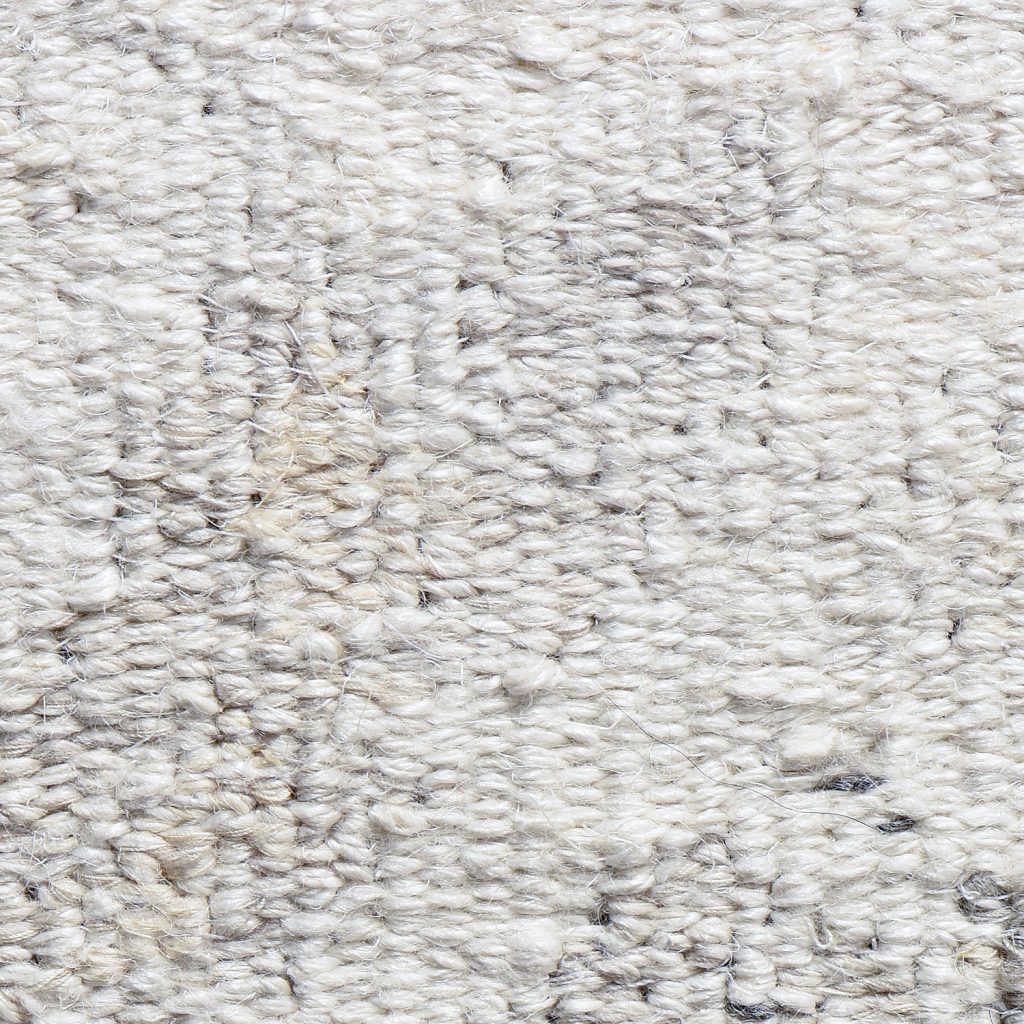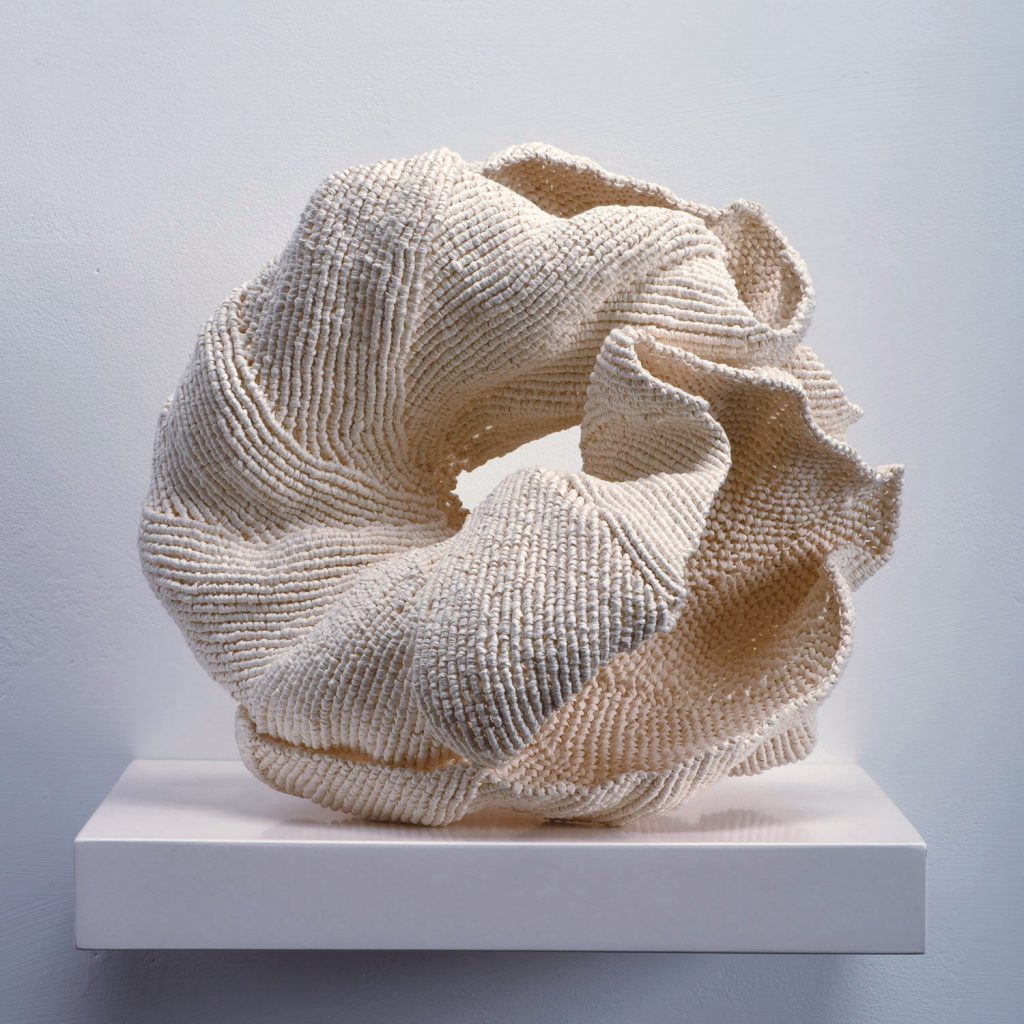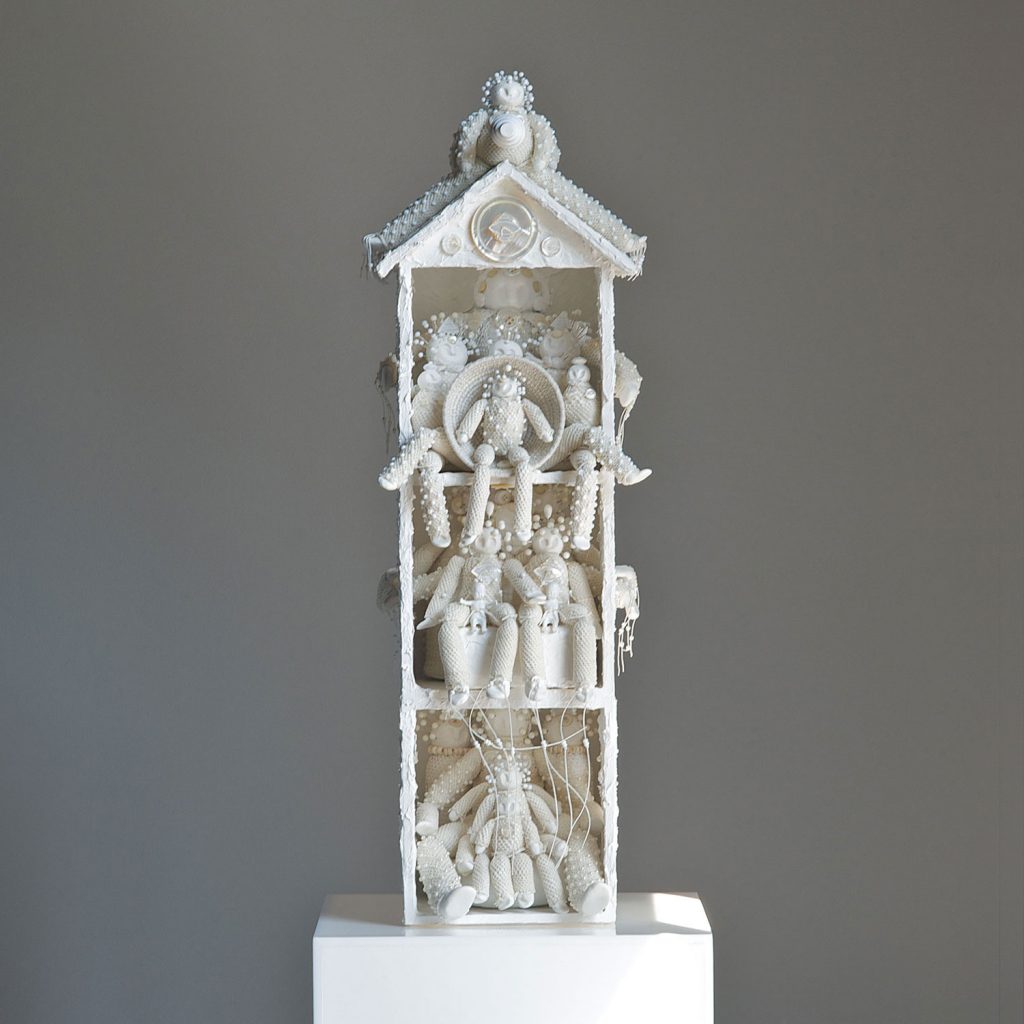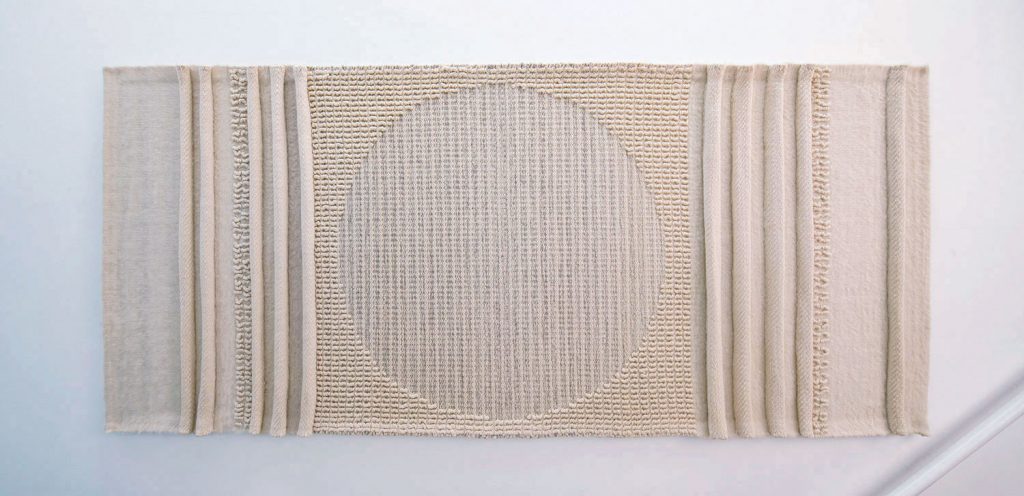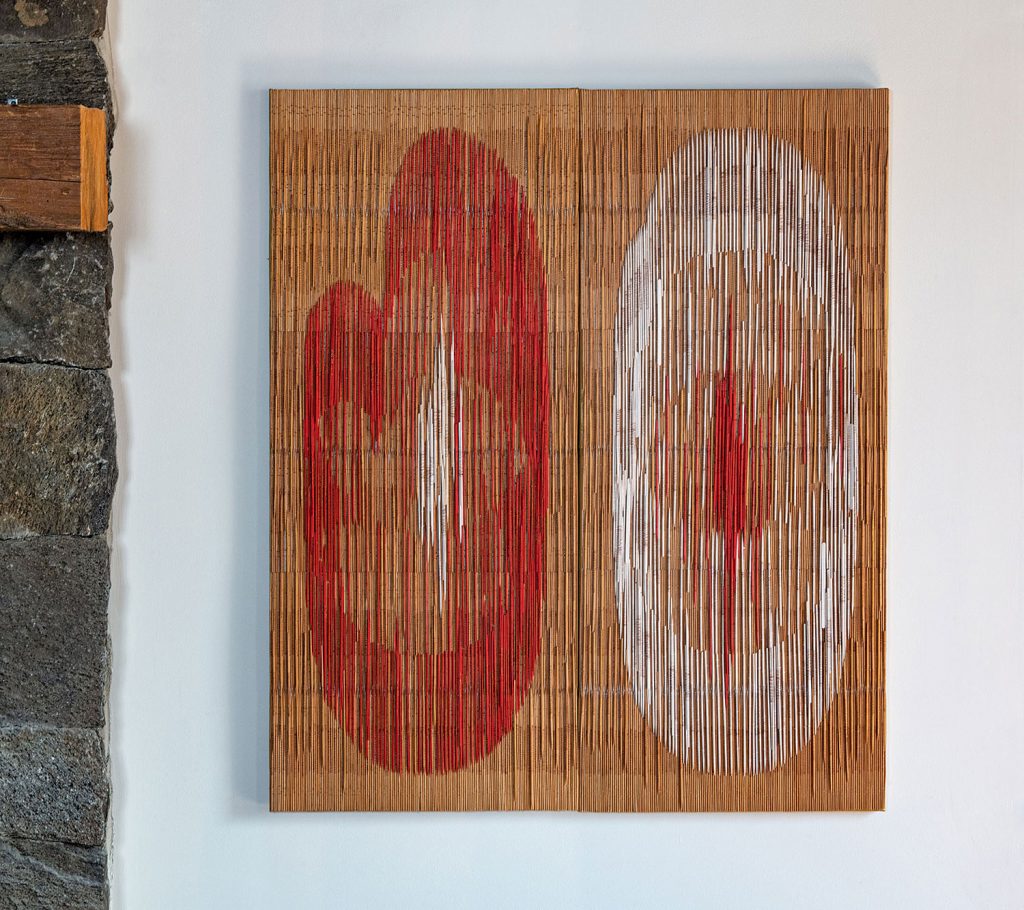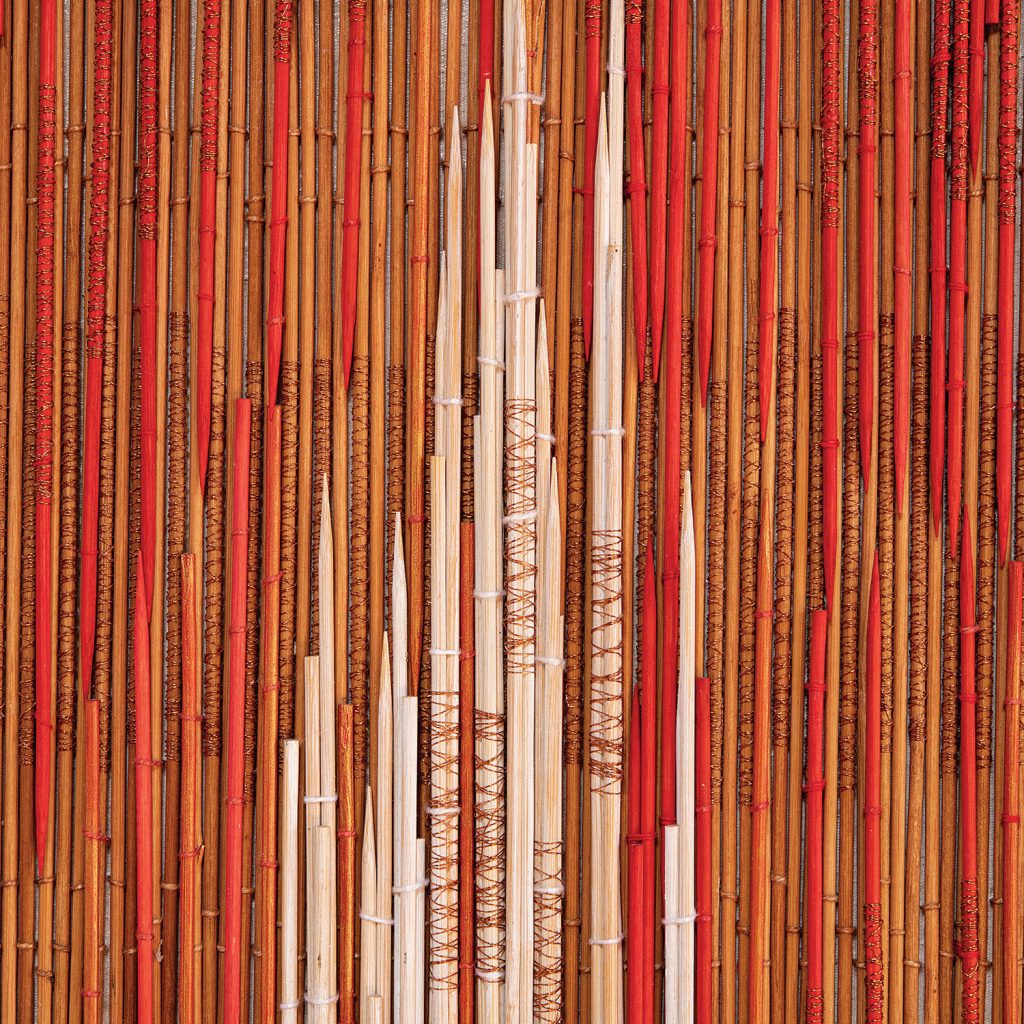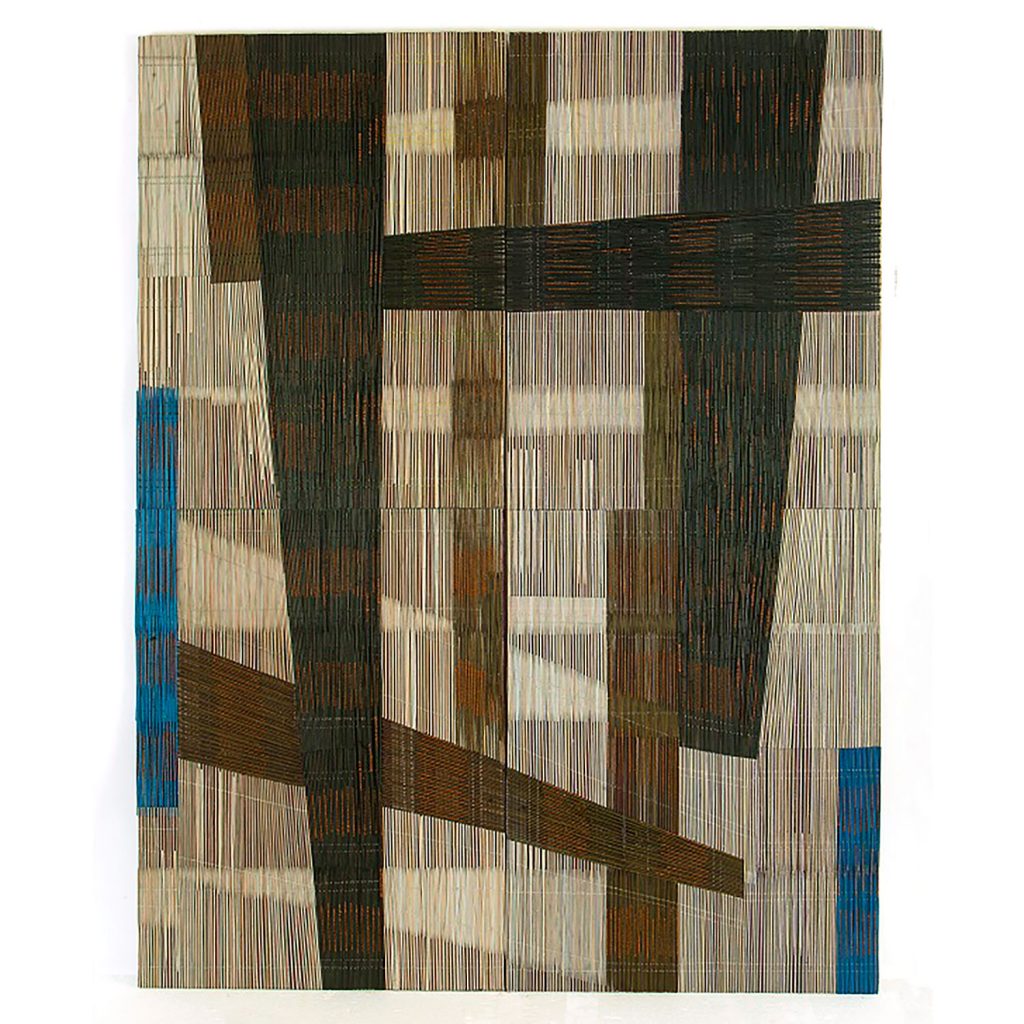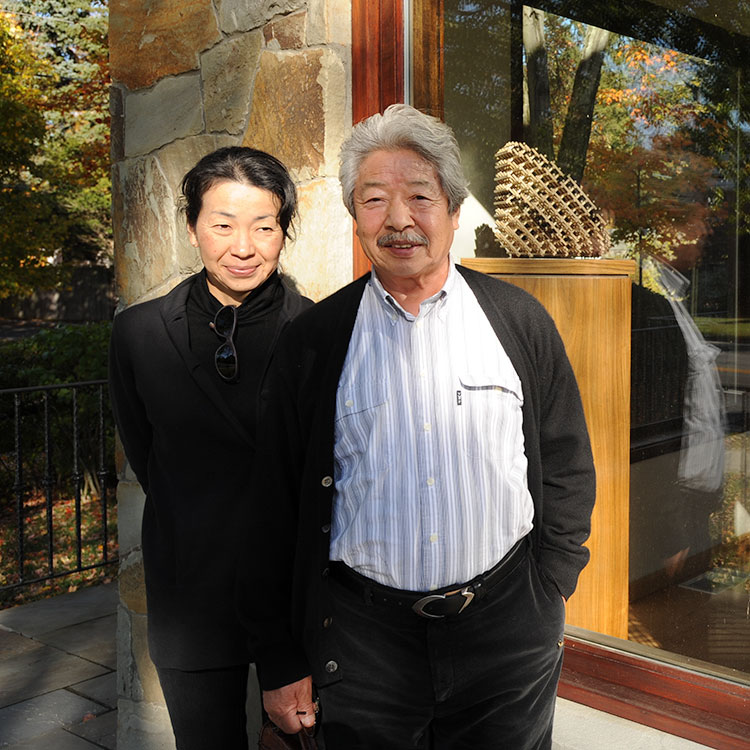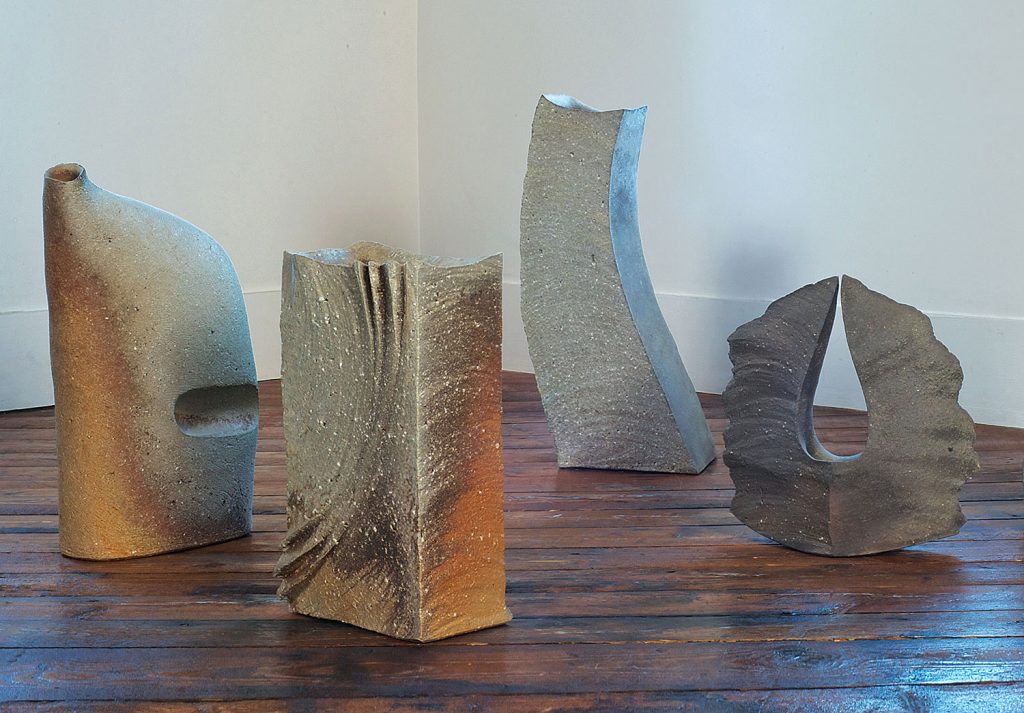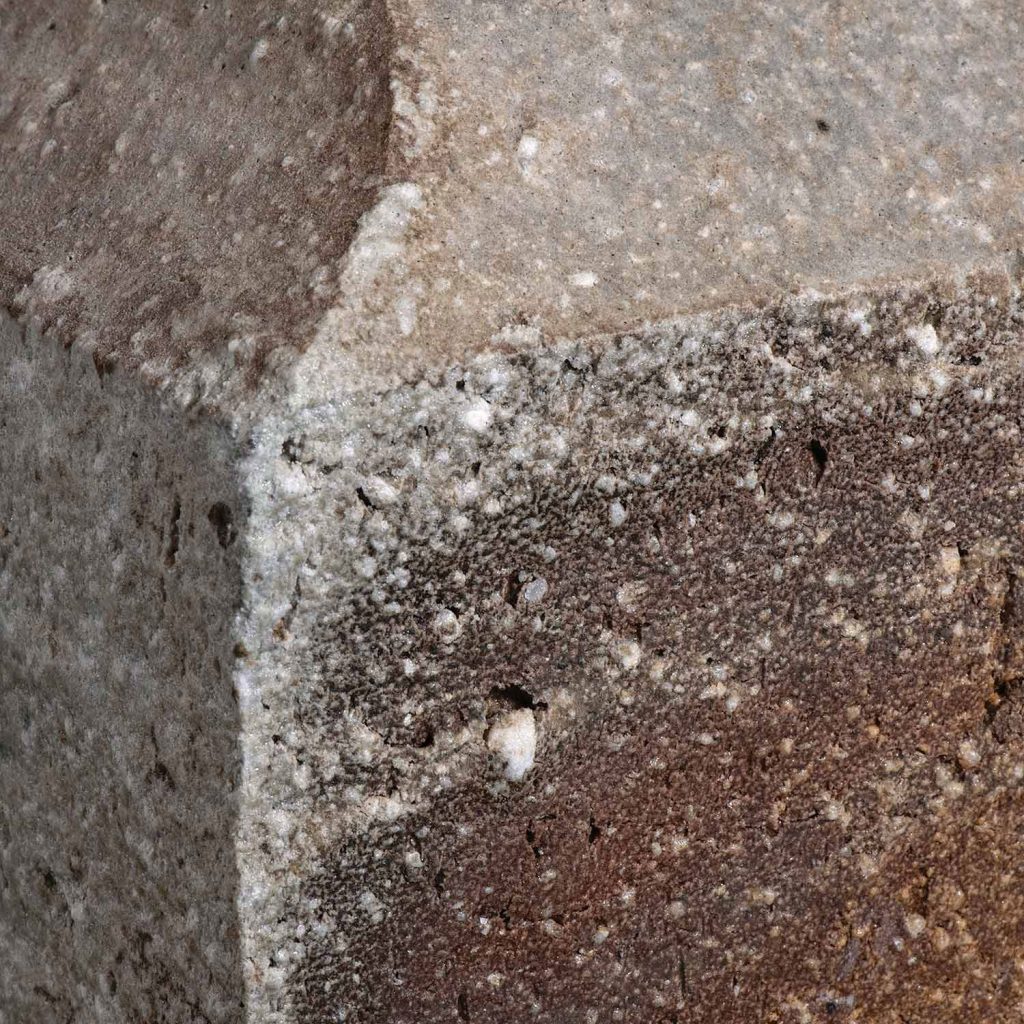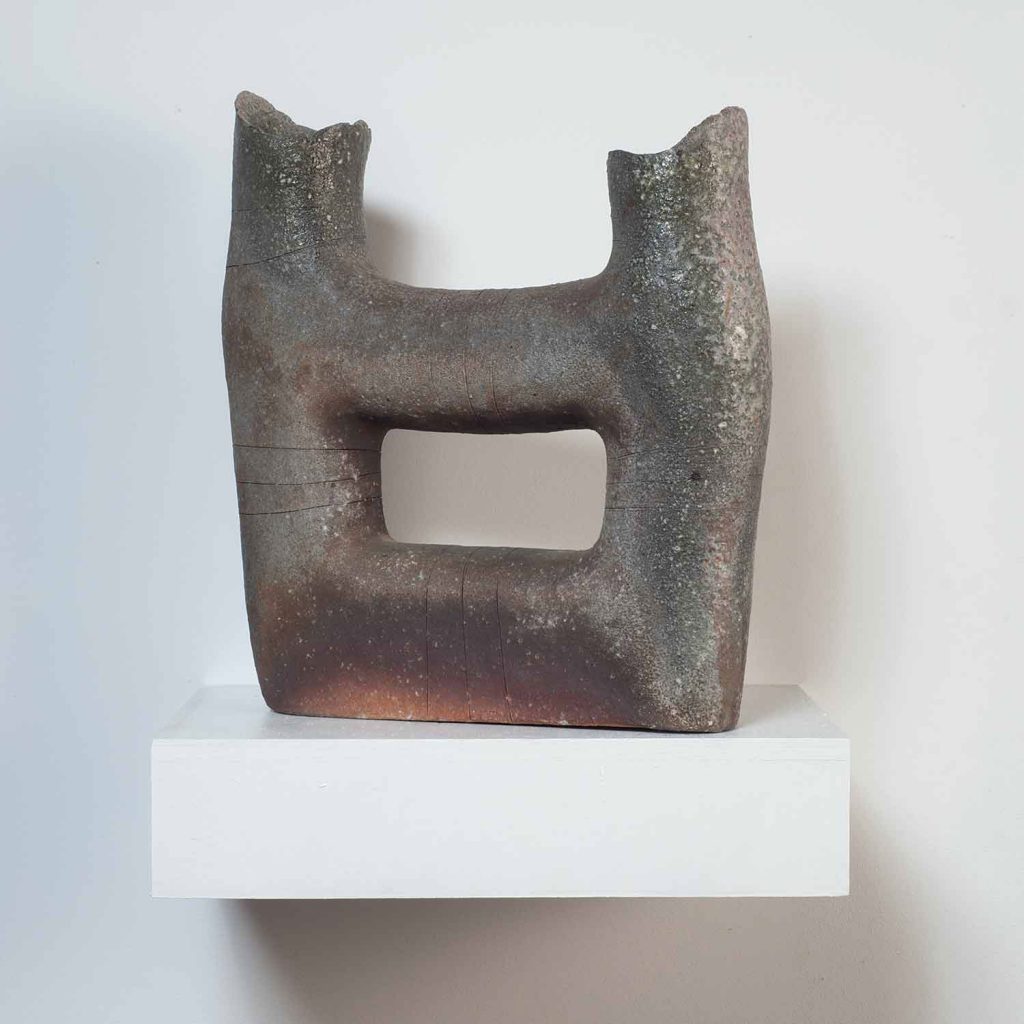
Gyöngy Laky’s work, Variant, a three-dimensional sculpture of “V” was featured in browngrotta arts’ recent exhibition, Adaptation: Artists Respond to Change. Laky often creates words and symbols. In this post she tells us why the “V.” In next week’s post, she shares the impetus behind her choice of materials — specifically, golf tees.
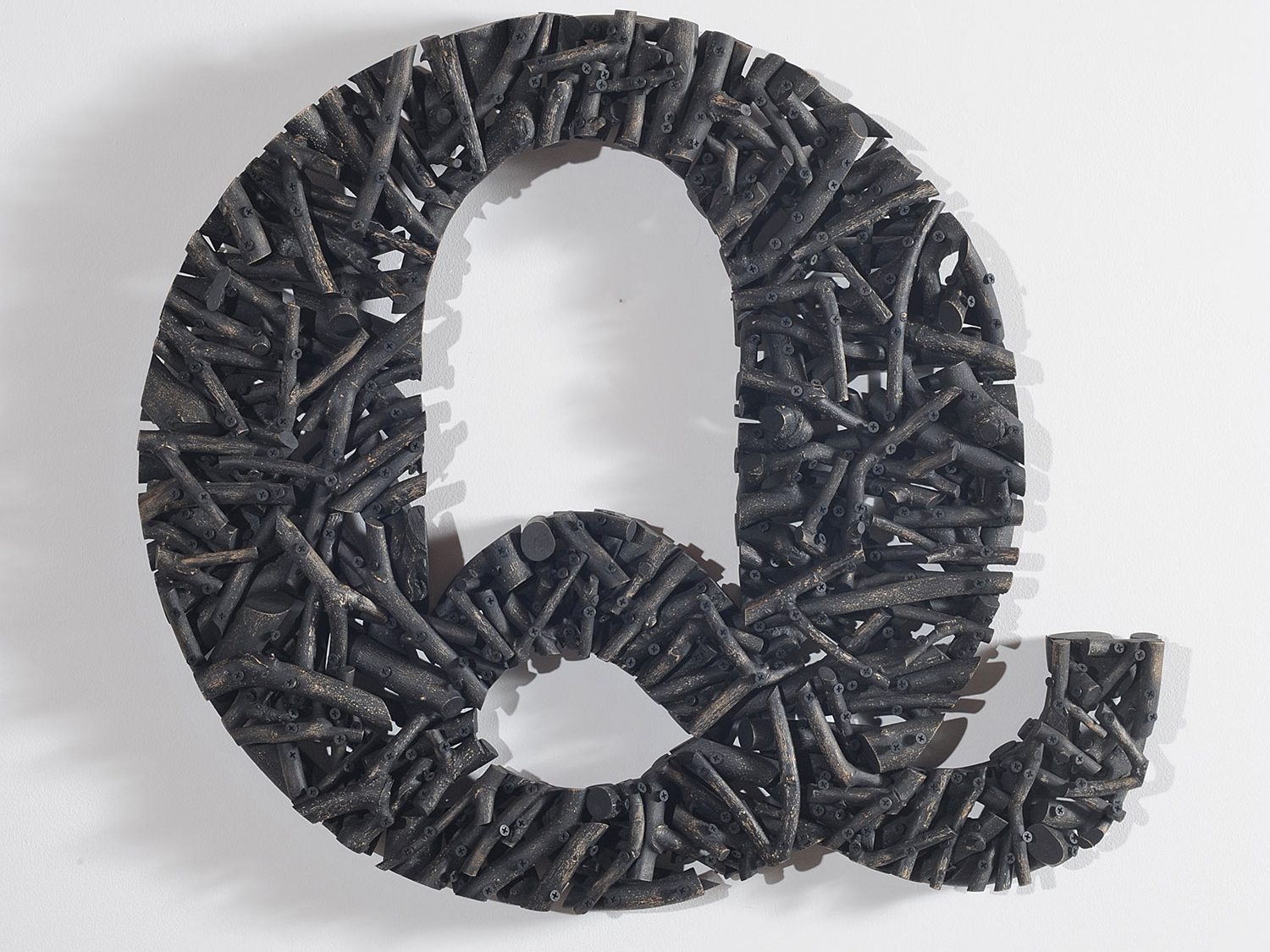
“A recurring theme in my art lexicon is language, symbols, signs and glyphic shapes and communication they inspire when in sculptural form,” says Laky. “Words fascinate me, their origins and what playing with them explores. Letters are word’s vehicles. Letter forms, like symbols, are lyrical, suggestive. A letter standing alone can convey much. ‘Q,’ a favorite subject of several sculptures, is no longer… given the assault on democracy on January 6, 2021.
“Learning languages is play for me: Early, I spoke Hungarian and German (mother, also Polish and French, father, English). Age 5, as refugees to the U.S., came English (French fluency in High School and a Paris year). Short studies of Russian, Hindi, Japanese, Mandarin, Italian and Spanish and playing with Catalan, Yiddish, Greek and Dutch followed.
“Many words came to play new, large roles with Covid 19. Early in 2020, ‘novel’ caught my eye. Articles I read with urgent interest to understand the new virus, to my surprise, used ‘novel’ corona. Novel? New? New crown? It was puzzling. Scientists use ‘novel’ as a provisional name until a permanent makes sense. We all know coronas as the common cold… but this one is devastating – a pandemic within weeks of appearing.
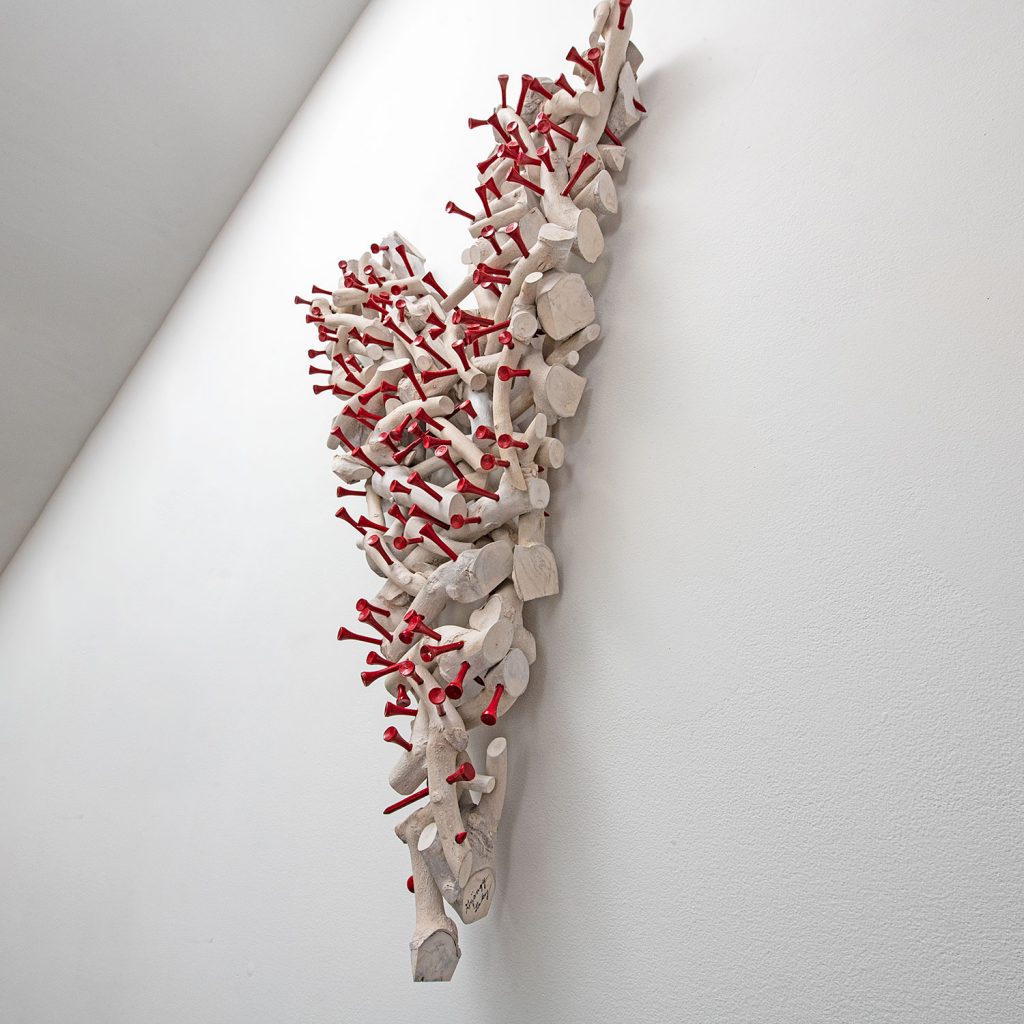
I became curious about the Latin plural form of virus discovering ‘viri’ translates as ‘men.’
The label ‘variant’ is ubiquitous warning us of impending danger. In the months of creating Variant it was everywhere, every day, accompanied by warnings and on April 5, 2021, I read about the new variant, ‘Eeek,’ a double mutation! ‘Eeek?’ Again, the scientists got right to the crux. A mutation named ‘Eeek’ calls for immediate high alert to danger.
As the word ‘variant’ drilled deep it occurred to me that we had recently experienced another devastating variant, a political variant, a leader with no governmental, administrative experience who was as unexpectedly dangerous as the following Covid 19.”
More on Variant on next week’s arttextstyle.


